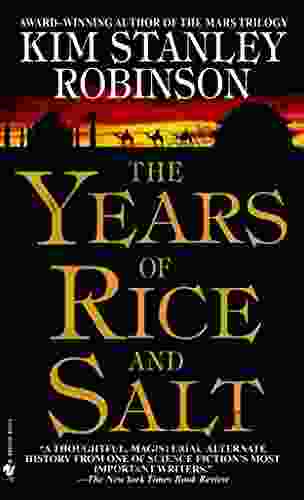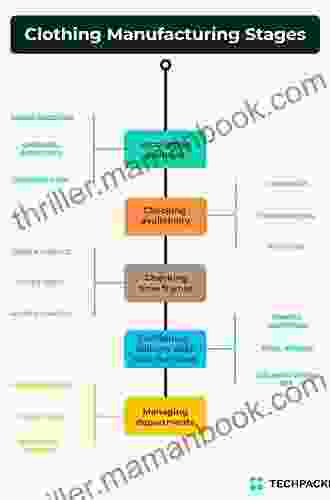The Complete Guide to Writing a Successful Screenplay

The first step in writing a screenplay is to develop your story idea. This can be a daunting task, but it's important to remember that all stories start with a simple premise. Once you have your premise, you can start to develop it into a more complete story.
Here are a few tips for developing your story idea:
- Brainstorm. Write down all of your ideas, no matter how crazy they seem.
- Talk to other people. Get feedback from friends, family, and other writers.
- Read other screenplays. See how other writers have developed their story ideas.
- Attend screenwriting workshops. Learn from experienced screenwriters and get feedback on your work.
Once you have a strong story idea, you can start to write your outline.
4.3 out of 5
| Language | : | English |
| File size | : | 2463 KB |
| Text-to-Speech | : | Enabled |
| Enhanced typesetting | : | Enabled |
| Word Wise | : | Enabled |
| Print length | : | 290 pages |
| Screen Reader | : | Supported |
The characters in your screenplay are just as important as the story itself. They are the ones who will drive the plot forward and make your story come to life. When creating your characters, it's important to consider their motivations, goals, and conflicts.
Here are a few tips for creating compelling characters:
- Give them clear motivations. Your characters should have something they want or need, and they should be willing to do whatever it takes to achieve their goals.
- Make them relatable. Your characters should be people that the audience can connect with. They should have flaws and weaknesses, but they should also be likeable and sympathetic.
- Develop their relationships. The relationships between your characters are just as important as their individual motivations. Make sure that your characters interact with each other in a way that is believable and engaging.
An outline is a roadmap for your screenplay. It will help you to stay organized and on track as you write your first draft. When writing your outline, be sure to include the following elements:
- Logline. A one-sentence summary of your story.
- Synopsis. A brief overview of your story, including the main characters, plot points, and ending.
- Scene list. A list of all the scenes in your screenplay, including a brief description of each scene.
Your outline should be detailed enough to give you a clear idea of the story you want to tell, but it should also be flexible enough to allow for changes as you write.
Once you have your outline, you can start writing your first draft. This is the most challenging part of the screenwriting process, but it's also the most rewarding. When writing your first draft, don't worry about making it perfect. Just get your ideas down on paper (or on the computer).
Here are a few tips for writing your first draft:
- Start with a strong opening scene. Your opening scene should grab the audience's attention and make them want to keep reading.
- Keep the pace moving. Your screenplay should be fast-paced and engaging. Don't bog it down with unnecessary details or exposition.
- Show, don't tell. Use action and dialogue to show your characters and story, rather than simply telling the audience what's happening.
- Don't be afraid to experiment. Your first draft is a chance to try out new ideas and see what works. Don't be afraid to take risks and experiment with different writing styles.
Once you have finished your first draft, it's time to start revising. This is an important step in the writing process, as it will help you to improve your story and make it more marketable.
Here are a few tips for revising your script:
- Get feedback from others. Ask friends, family, or other writers to read your script and give you feedback. This will help you to identify any weaknesses in your story and make it more appealing to a wider audience.
- Take your time. Don't rush the revision process. Take your time to read your script carefully and make sure that it is the best it can be.
- Don't be afraid to make changes. Revising your script is a chance to make it better. Don't be afraid to make changes to your story, characters, or plot.
Once you have finished revising your script, it's time to format it. This is the process of making your script look professional and ready to be submitted to agents and producers.
There are a few different ways to format a screenplay, but the most common format is the industry standard script format. This format is used by professional screenwriters and is the preferred format for submitting scripts to agents and producers.
You can find more information on how to format your script online or in a screenwriting book.
Once you have formatted your script, it's time to start submitting it to agents and producers. This can be a daunting task, but it's important to be persistent. The more people you submit your script to, the more likely you are to find someone who is interested in producing it.
Here are a few tips for submitting your script:
- Research agents and producers. Before you start submitting your script, take some time to research agents and producers who are interested in your type of story. This will help you to target your submissions and increase your chances of success.
- Write a strong cover letter. Your cover letter is your chance to introduce yourself and your script to agents and producers. Make sure that it is well-written and that it highlights the strengths of your script.
- Be persistent. Don't give up if you don't get a response right away. Keep submitting your script until you find someone who is interested in producing it.
Writing a successful screenplay is a challenging but rewarding experience. If you follow the tips in this guide, you will increase your chances of writing a screenplay that will get produced.
4.3 out of 5
| Language | : | English |
| File size | : | 2463 KB |
| Text-to-Speech | : | Enabled |
| Enhanced typesetting | : | Enabled |
| Word Wise | : | Enabled |
| Print length | : | 290 pages |
| Screen Reader | : | Supported |
Do you want to contribute by writing guest posts on this blog?
Please contact us and send us a resume of previous articles that you have written.
 Top Book
Top Book Novel
Novel Fiction
Fiction Nonfiction
Nonfiction Literature
Literature Paperback
Paperback Hardcover
Hardcover E-book
E-book Audiobook
Audiobook Bestseller
Bestseller Classic
Classic Mystery
Mystery Thriller
Thriller Romance
Romance Fantasy
Fantasy Science Fiction
Science Fiction Biography
Biography Memoir
Memoir Autobiography
Autobiography Poetry
Poetry Drama
Drama Historical Fiction
Historical Fiction Self-help
Self-help Young Adult
Young Adult Childrens Books
Childrens Books Graphic Novel
Graphic Novel Anthology
Anthology Series
Series Encyclopedia
Encyclopedia Reference
Reference Guidebook
Guidebook Textbook
Textbook Workbook
Workbook Journal
Journal Diary
Diary Manuscript
Manuscript Folio
Folio Pulp Fiction
Pulp Fiction Short Stories
Short Stories Fairy Tales
Fairy Tales Fables
Fables Mythology
Mythology Philosophy
Philosophy Religion
Religion Spirituality
Spirituality Essays
Essays Critique
Critique Commentary
Commentary Glossary
Glossary Bibliography
Bibliography Index
Index Table of Contents
Table of Contents Preface
Preface Introduction
Introduction Foreword
Foreword Afterword
Afterword Appendices
Appendices Annotations
Annotations Footnotes
Footnotes Epilogue
Epilogue Prologue
Prologue Shadreck Zhuanginyu
Shadreck Zhuanginyu Sudha Kuruganti
Sudha Kuruganti Sheri Lynn Marean
Sheri Lynn Marean Kylie Walker
Kylie Walker Brenda Long
Brenda Long Camille Fournier
Camille Fournier Kathryn Meyer Griffith
Kathryn Meyer Griffith Mellinee Lesley
Mellinee Lesley Julia Buckley
Julia Buckley Patrick Wang
Patrick Wang Barby Keel
Barby Keel Carl Hoffman
Carl Hoffman Paul H Patterson
Paul H Patterson Mayu Sakurai
Mayu Sakurai Huw Richards
Huw Richards By Colleen Wool
By Colleen Wool Jesse H Rhodes
Jesse H Rhodes Laura Ware
Laura Ware J M Ney Grimm
J M Ney Grimm Neetha Naidu
Neetha Naidu
Light bulbAdvertise smarter! Our strategic ad space ensures maximum exposure. Reserve your spot today!

 Herman MitchellAdvice On Love And Life From Dear Sugar: A Deep Dive into Cheryl Strayed's...
Herman MitchellAdvice On Love And Life From Dear Sugar: A Deep Dive into Cheryl Strayed's... Robert HeinleinFollow ·11.9k
Robert HeinleinFollow ·11.9k Anthony WellsFollow ·9.1k
Anthony WellsFollow ·9.1k Jordan BlairFollow ·5.2k
Jordan BlairFollow ·5.2k Dakota PowellFollow ·5.8k
Dakota PowellFollow ·5.8k Garrett PowellFollow ·14.1k
Garrett PowellFollow ·14.1k Hunter MitchellFollow ·8.8k
Hunter MitchellFollow ·8.8k Duane KellyFollow ·10.9k
Duane KellyFollow ·10.9k Trevor BellFollow ·9.7k
Trevor BellFollow ·9.7k

 Caleb Carter
Caleb CarterThe Complete Beagle Dog Beginners Guide: Beagle Facts,...
Beagles are...

 Gage Hayes
Gage HayesThe Origins and Evolution of No Child Left Behind:...
The No Child Left Behind...

 George Martin
George MartinThe Love Pirates: A Swashbuckling Tale of Love,...
The Love Pirates is a thrilling...

 Nathaniel Hawthorne
Nathaniel HawthorneDifferentiating the Curriculum for Gifted Learners:...
Gifted learners are...

 Carlos Fuentes
Carlos FuentesThe Years of Rice and Salt: A Journey Through a Forgotten...
The Years of Rice and Salt is...

 Herbert Cox
Herbert CoxThe Intricate Design of Clothing Manufacturing Processes:...
The clothing industry is a vast and...
4.3 out of 5
| Language | : | English |
| File size | : | 2463 KB |
| Text-to-Speech | : | Enabled |
| Enhanced typesetting | : | Enabled |
| Word Wise | : | Enabled |
| Print length | : | 290 pages |
| Screen Reader | : | Supported |










